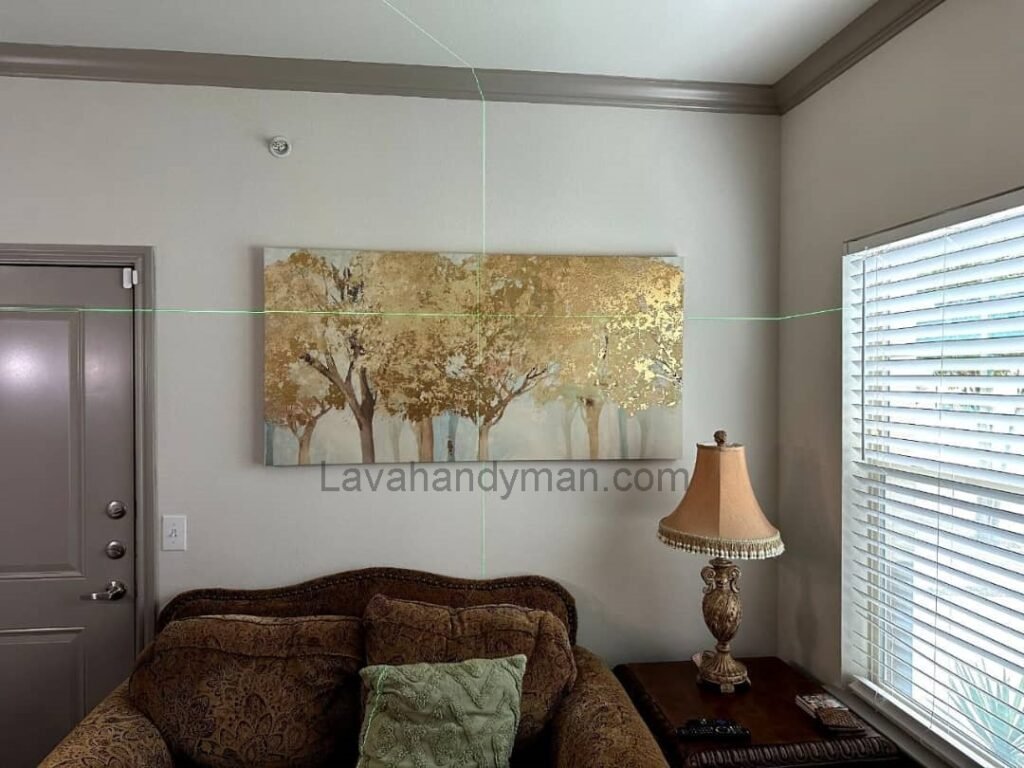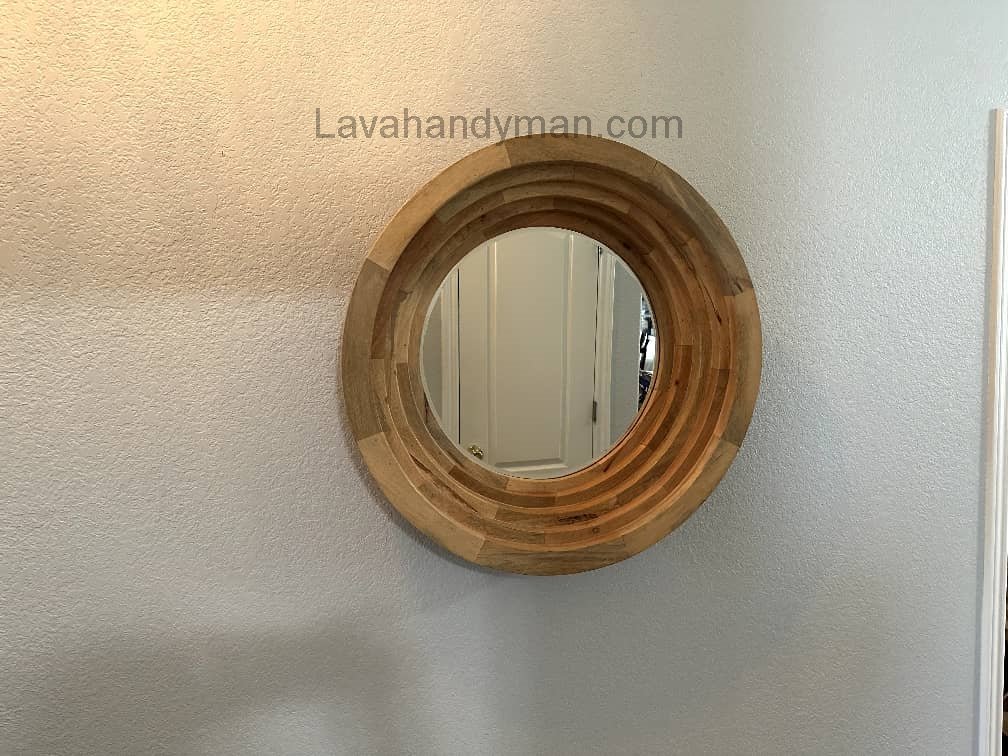Hanging Paintings in the Bedroom and Living Room
Introduction
Paintings are powerful elements in interior design. They not only add beauty to a space but also bring character, emotion, and personality. Among all rooms in a home, the bedroom and living room are most impacted by the choice and placement of artwork. This comprehensive guide explores how to choose and hang paintings in these two areas, covering everything from style and size to lighting and installation tips.
1. The Role of Art in Interior Design
1.1 Reflecting Personality and Taste
The paintings you choose reflect your interests, aesthetic values, and even your emotional world. Whether classical or modern, the artwork communicates your unique identity.
Hanging Paintings in the Bedroom and Living Room
1.2 Creating a Focal Point
Every room benefits from a focal point that draws the eye. A painting can serve as a visual anchor, helping tie together various design elements in a space.
1.3 Psychological Effects of Color and Form
Colors and shapes within a painting can affect your mood. Soothing art is ideal for the bedroom, while energizing or expressive art fits well in a living room.

2. Choosing the Right Painting for the Bedroom
2.1 Ideal Themes and Content
For bedrooms, opt for calming, soft, and romantic themes such as:
- Serene landscapes (sea, mountains, sunsets)
- Watercolor or minimalist artworks
- Abstract or impressionistic love-themed art
2.2 Suitable Size
Avoid oversized paintings in the bedroom. If installing above the bed, ensure the width is less than that of the headboard, and position it about 20–30 cm (8–12 inches) above it.
Hanging Paintings in the Bedroom and Living Room
2.3 Color Harmony
Coordinate the artwork’s color palette with the room’s tones—walls, bedding, curtains, and rugs. For example, in a gray-toned room, choose art with blues, whites, or soft earthy hues.
2.4 Best Placement Ideas
- Above the bed (most common)
- Beside the dressing table
- Opposite the bed
- Above a nightstand or reading light
Hanging Paintings in the Bedroom and Living Room
3. Selecting Paintings for the Living Room
3.1 Importance of Living Room Art
The living room is the most visible and formal space in your home—your guests will notice what you hang here. Thoughtfully selected art creates an inviting or sophisticated ambiance.
3.2 Popular Styles and What They Convey
| Style | Features |
|---|---|
| Classical | European landscapes, portraits, oil paintings |
| Modern | Abstract, geometric, minimalist |
| Nature-Inspired | Flowers, animals, scenic landscapes |
| Cultural | Persian motifs, calligraphy, ethnic art |
Hanging Paintings in the Bedroom and Living Room
3.3 Choosing the Right Size
Larger paintings or multi-panel pieces work well in spacious living rooms. In smaller rooms, choose medium-sized paintings with a defined frame.
3.4 Ideal Locations
- Main wall behind the sofa
- Above the fireplace
- Beside or opposite the TV
- Entrance wall or hallway
4. Technical Guidelines for Hanging Paintings
4.1 Standard Height
The general rule is to hang art so that the center is around 145 to 155 cm (57 to 61 inches) from the floor—at average eye level.
- Above a bed: 20–30 cm above the headboard
- Above a sofa: 15–20 cm above the backrest
Hanging Paintings in the Bedroom and Living Room
4.2 Tools You’ll Need
- Measuring tape and level
- Hammer or drill
- Wall anchors and screws
- Picture hooks or wall mounts
- Heavy-duty double-sided tape (for lightweight art)
4.3 Safety and Stability
For heavier pieces, use two hooks to ensure balance and safety. In homes with children or pets, consider locking hooks or anti-tip adhesives.
4.4 Effective Lighting
Spotlights or track lights can significantly enhance the look of a painting. Use warm white lighting (around 3000K) to highlight the art without distorting its colors.
Hanging Paintings in the Bedroom and Living Room
5. Creative Ideas for Displaying Art
5.1 Gallery Wall
Combine several paintings of different sizes into a structured or free-form gallery wall—perfect for behind a sofa or along a hallway.
5.2 Multi-Panel Art (Triptych)
A triptych consists of three coordinated pieces that form a single image. Ideal for modern spaces with large, empty walls.
5.3 Mix with Mirrors or Photo Frames
Integrate framed photos or decorative mirrors alongside paintings to create a dynamic and personal display.
5.4 Frameless or Floating Canvases
Go modern by choosing unframed or 3D floating canvases. They give a minimalist, contemporary vibe.
Hanging Paintings in the Bedroom and Living Room
6. Common Mistakes and How to Avoid Them
| Mistake | Recommended Fix |
|---|---|
| Hanging too high or too low | Center the art at eye level (approx. 150 cm from floor) |
| Mismatched art and decor | Choose styles and colors that complement your furniture and fabrics |
| Wrong size for the wall | Match artwork size with wall scale and furniture placement |
| Ignoring lighting | Add focused lighting for visual impact |
| Using cheap or clashing frames | Invest in quality, well-matched frames (wood, metal, black, or white) |
Hanging Paintings in the Bedroom and Living Room

7. Final Design Tips for Harmonizing Art and Interior
- In neutral spaces, colorful artwork can energize the room.
- In busy, patterned spaces, simple art with soft tones works best.
- Choose frames that align with your décor style:
- Wooden frames for classic or rustic styles
- Black metal or white frames for modern and minimalist interiors
✅ A Practical Guide to Choosing Brackets for Hanging Paintings and Mirrors
Proper installation of artwork or mirrors requires selecting the right bracket based on the weight, size, wall type, and desired appearance. Below is a breakdown of the most common types of brackets and their best uses.
Hanging Paintings in the Bedroom and Living Room
🔩 1. Simple Picture Hooks
- Best for: Lightweight, small paintings
- Wall type: Plaster, wood, soft brick
- Installation: With one or two nails
- Features: Quick and easy to use for everyday frames
- Tip: Ideal for items under 2 kg (4.5 lbs)
🪛 2. Heavy-Duty Wall Hooks
- Best for: Medium-sized mirrors or large paintings
- Wall type: Concrete or solid brick walls
- Installation: Screws with wall plugs (anchors)
- Features: Strong and secure; suitable for heavier items
- Tip: Use a level to ensure straight hanging
Hanging Paintings in the Bedroom and Living Room
🔲 3. French Cleat Brackets
- Best for: Heavy mirrors or valuable artwork
- Wall type: Plaster, concrete, cement
- Installation: Two parts — one on the wall, one on the back of the frame
- Features: Very secure and provides perfect alignment
- Tip: Ideal for luxury or large installations
🧱 4. Invisible or Hidden Brackets
- Best for: Frameless or minimalist paintings and mirrors
- Wall type: Smooth and even surfaces
- Installation: Built into the back of the frame
- Features: Clean, modern look with no visible hardware
- Tip: Requires accurate measurement for proper alignment
Hanging Paintings in the Bedroom and Living Room
🧵 5. Wire Hanging System
- Best for: Gallery walls or multiple frames in a row
- Installation: Wire attached to the back of the frame, hung from two wall hooks
- Features: Adjustable and easily repositioned
- Tip: Common in studios and creative spaces
🔧 6. Toggle Bolts (Molly Bolts)
- Best for: Drywall or hollow walls; heavy mirrors
- Installation: Screw expands behind the wall for added grip
- Features: High load capacity for weak walls
- Tip: Requires precise drilling and proper tools
Hanging Paintings in the Bedroom and Living Room
🩹 7. Strong Adhesive Strips (e.g., 3M Command Strips)
- Best for: Lightweight frames, damage-free hanging
- Wall type: Clean, flat, non-textured surfaces
- Features: Easy to apply and remove without damaging walls
- Tip: Perfect for renters or temporary installations
Hanging Paintings in the Bedroom and Living Room
📝 Key Tips for Hanging Artwork or Mirrors
✅ Know the weight of your item before choosing a bracket
✅ Identify your wall type (plaster, concrete, drywall, etc.)
✅ Use two brackets for heavy or large frames to keep them level
✅ Always use a spirit level to ensure straight hanging
✅ For valuable or heavy items, consider hiring a professional installer
🧱 Step-by-Step Guide to Installing a Painting or Mirror on the Wall
Proper installation not only enhances the visual appeal of your décor but also ensures safety, balance, and durability. Follow this clear and practical guide for a secure and professional result:
Hanging Paintings in the Bedroom and Living Room
🧰 Tools and Materials You’ll Need
- Measuring tape & pencil
- Spirit level (manual or laser)
- Drill or hammer
- Screws, wall plugs (anchors), or nails
- Suitable bracket or hook (based on weight)
- Screwdriver or electric drill
- Cleaning cloth
- Gloves (optional)
1. Choose the Right Spot
- Hold the painting or mirror against the wall to find the ideal position.
- Standard center height: 150 cm (59 inches) from the floor (at average eye level).
- If installing above a bed or sofa: leave 20–30 cm (8–12 inches) of space from the top edge.
- Mark the center point lightly with a pencil.
Hanging Paintings in the Bedroom and Living Room
2. Measure and Level
- Measure the distance between the hooks or brackets on the back of the piece.
- Mark the same distance on the wall, centered on your earlier mark.
- Use a level to ensure the marks are perfectly horizontal.
- Mark the spots for screws or anchors clearly.
3. Drilling (if required)
- For concrete, brick, or plaster walls, and heavier items, use a drill and wall plugs.
- Drill holes 3–5 cm deep (based on plug size).
- Gently insert the wall plugs using a hammer.
💡 For drywall or hollow walls, use toggle bolts or special drywall anchors for better support.
Hanging Paintings in the Bedroom and Living Room
4. Install the Bracket or Hook
- Position the hook or bracket over the wall plugs.
- Tighten the screws using a screwdriver or drill.
- Ensure the bracket is secure and stable with no wobbling.
5. Hang the Painting or Mirror
- Carefully hang the piece onto the hooks or brackets.
- Hold both sides and adjust until it’s level.
- If using French cleats or hidden brackets, slide the piece into position until it locks firmly.
Hanging Paintings in the Bedroom and Living Room
6. Final Check & Safety
- Use a level to confirm that the frame or mirror is straight.
- For added safety (especially in homes with children or pets), apply adhesive pads or anti-slip bumpers to the back.
- Optional: Add a spotlight or focused light for dramatic effect and enhanced visibility.
✅ Pro Tips
In high-traffic areas, consider shock-absorbing pads or safety locks for extra stability.
Check for electrical wires or pipes before drilling. Use a wall scanner if needed.
For heavy items, always use two hooks or a dual mounting system.
Mirrors require stronger brackets and more secure installation.
Conclusion
Paintings are more than decorative objects—they are emotional and cultural expressions that elevate your space. Whether in the bedroom or living room, selecting the right painting and installing it correctly can completely transform your home.
Final Tips:
- In bedrooms, use peaceful, dream-like paintings.
- In living rooms, let artwork make a statement.
- Consider size, placement, and lighting as crucial design elements.
- Get creative with arrangements—gallery walls, triptychs, and frame pairings.
- Keep your art aligned with your overall décor for a unified, stylish look.
📞 Need Help?
Let us take care of the hard work while you sit back and relax.
📍 Serving: Austin, Round Rock, Cedar Park & more
📱 Call or Text: (737) 420-6992
🌐 Visit: https://lavahandyman.com


